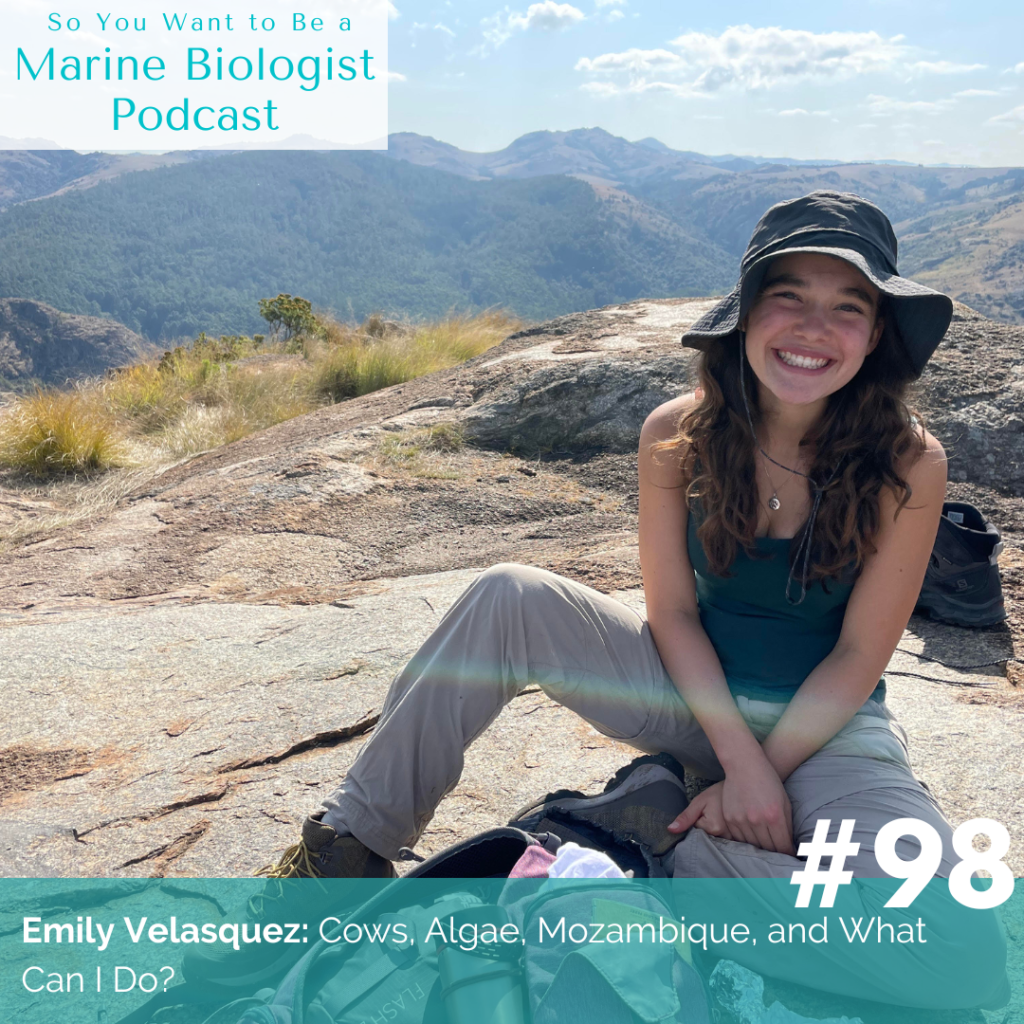Emily Velasquez is a student who currently lives in Mozambique. Though a newcomer to the country, she’s followed her curiosity to help answer some of the most pressing questions that this region- and the world- faces. From mangrove reforestation to using red algae in cattle feed to reduce methane emissions, Emily’s projects and goals are wide ranging with positive, long-lasting implications.
Connect with Emily: email
Quick Links
Mangroves
Asparagopsis taxiformis
Love the Oceans
Jennifer Smith
UC San Diego
Jennifer Keeping
All Out Africa
seaExpert
USAID
The World Bank
Ostara
University of Hawaii at Manoa
Bio Outfall Monitoring
Maputo Special Reserve
Show Notes
0:10 Throughout her childhood, Emily was always surrounded by the ocean. On her first ever dive in Mozambique, she was mesmerized by the incredible marine life which inspired her fascination and passion for marine science.
3:04 The first project that Emily worked on in marine science was restoring mangroves in Ecuador. This project inspired her to continue looking into the best restoration methods that could be applied to areas closer to home in Mozambique. She was determined to learn from work done by local researchers to find answers to various restoration problems.
11:48 Emily is keen on reaching out to various organizations to learn from their work and support her own research. She speaks about some of the organizations she has connected with and continues to work with now.
14:15 Asparagopsis taxiformis is a red algae that caught Emily’s attention from a publication she read since it was shown to reduce methane emissions in cattle. With the potential to reduce emissions from livestock production, Emily was very excited about the idea. She discusses how the process works.
17:40 Although there is a potential for Asparagopsis taxiformis to reduce cattle emissions, the realities of doing this on a large scale is not a simple task due to the resources required. Emily discusses the shortcomings of the idea and emphasizes the importance of approaching ideas with a critical angle.
22:05 Emily is continuing to keep an interest on Asparagopsis taxiformis and has started a project to measure the abundance of the species on Mozambique coastlines. She discusses how she is doing this project and what her field work entails.
29:04 Emily is excited to continue with her work with the goal to eventually publish her research about Asparagopsis taxiformis. She is also interested to create a mathematical model to better predicts where else the seaweed could be growing and use this information to encourage more marine research in her area.
31:17 Emily speaks more about the abundance mathematical model she is working on and the various environmental factors that she wants to consider.
35:57 Emily’s favorite sea creature is the humpback whale because she has had an incredible up-close encounter with one
36:42 Emily shares her special humpback whale encounter story.
29:50 To Emily, the ocean means peace and adventure.
40:19 With a blank cheque, Emily would fund more marine research in Mozambique and Venezuela, fund her own research regarding biofertilizers in water treatment centers, and help to monitor the bay in her area.
41:33 Emily shares another field story of when she swam with manta rays while collecting data on a dive.
43:07 Emily’s conservation ask is to go out and do good, follow your fascination, learn more about what inspires you, and use less plastic.
44:00 Connect with Emily!
